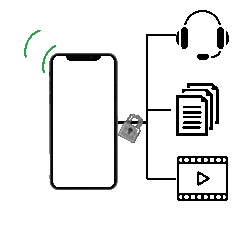TETRA suitable for Critical Communication
TETRA is a suitable technology for most critical communication needs. With our experience in consulting, engineering and projects, we can support you in selecting and adopting your communication solution exactly according to your requirements. Learn about TETRA in the below section.

TETRA delivers a full Critical Communication solution
Mature and developed for public safety it is usable in any business are and market today. TETRA is mainly focused for voice communication and operates very frequency efficient.
TETRA does come with Infrastructure, Terminals, Modems and a large application suite like dispatchers, voice and data recorders as well as gateways and interfaces to LTE, telephone systems or surveillance tools.


TETRA also provides proven interoperability test reports. This hereby ensures to be manufacturer independent, when extending your system with additional terminals. Anyhow the interoperability is only ensured on the air interface, any application and gateway is most likely a proprietary solution as with other technologies.
Since TETRA initially when defined by ETSI (TS 100 392) was intended for public safety, it does provide you with plenty of priority and emergency features. This and the high level of redundancy and resilience ensures highest degree of availability of your communication system.
TETRA systems are typically available in VHF and UHF frequencies from 160 to 800MHz. With this low frequency range they coverage area is quite large and the licensed spectrum ensures no neighbour system interferences.

Use Cases
This section shall just provide a small summary of TETRA installations. It has no intention to be a complete overview, but should encourage the reader to think, how he can benefit from using TETRA as his critical communication solution.
For example railway tracks are using TETRA for both voice but also data traffic. Rail systems like ETCS (European Train Control System) or other TCS (Train Control Systems) do rely on the guaranteed bandwidth of a TETRA channel. A train gets stopped or the next track segment granted via this communication system. You can well imagine this is absolutely life crucial and thereby mission critical communication in its roots, if you just imagine what will happen if such a system fails to two trains coming from both directions on a single track.
Another example is the critical communication within an airport, where all ground staff is dispatched via a TETRA system. For the bus drivers small status SDS (short data service; similar to SMS in mobile networks) do offer the possibility to assign and confirm a job. Integrated GPS positions provide a clear overview to the dispatcher station, which resources are available where on airfield ground. Voice communication is thereby supplementing the feature set and especially useful for unscheduled or emergency communication. Full duplex individual calls or group calls of unlimited group sizes both can be very handy in this situation. Emergency calls can be established to anyone or selective groups, due to the priority scheme the system is in full control and will replace all ongoing calls with the required emergency information.
Industries like car manufacturers, airplane builders, heavy metal industry and plenty more do trust TETRA also for their internal critical communication system. Company fire brigades, security staff as well as workers share a common communication system. Typically the system gets fully integrated into the phone system as a large communication platform. When doing so smartphones and TETRA terminals can extend the availability of required staff being reachable under their same desk number. But beyond the standard telephone call these users do also share their position, can receive and deliver status reports for jobs assigned to them and are connected to relevant groups and more important to the emergency call system.
Sports events like football, baseball, motorsports e.g. Formula One, Olympic Games or music festivals do trust TETRA as well for their critical communication systems. In such events emergency plans and coordination is key, but more security and organisation is key to success. TETRA provides both in one system. Geofencing additionally as a feature combination of GPS tracking and alarming for leaving or entering an area via SDS or voice call becomes very handy in such events.
Utilities either in resource gaining branches (like mining and oil or gas) or supplying branches (such as water supply or electricity) do rely heavily on TETRA as their preferred critical communication solution. Typically narrow band data is neded to monitor some valves, meters or to control some engines. In parallel the users benefit from a privately owned and controllable communication system, which assist them to keep any communication secret and confidential. Special ATEX (French for: ATmosphéres EXplosibles) do allow the usage of such systems even under ground or on oil platforms, where the risk of explosions is pretty high and one single spark can easily cause a catastrophe.
Many nations do use TETRA as their public safety mission critical communication system. Public buildings like shopping malls, stadiums, museums can be forced depending on the region to provide coverage for TETRA. This is due to fire brigade, ambulance or police having to enter these for the jobs, they are called for. Additionally the system may then potentially be used also for security staff of the building and for daily communication in non-emergency scenarios. This way the coverage within objects, where typically there is a blackspot in coverage, is assured, but also the investor may be able to reuse some of his investment and rent his system to daily users.
